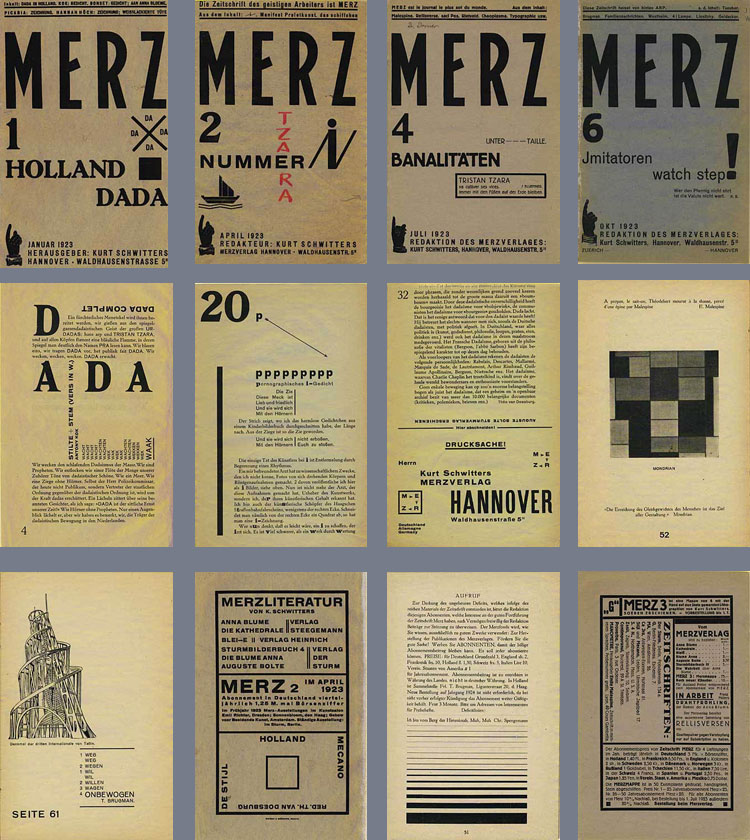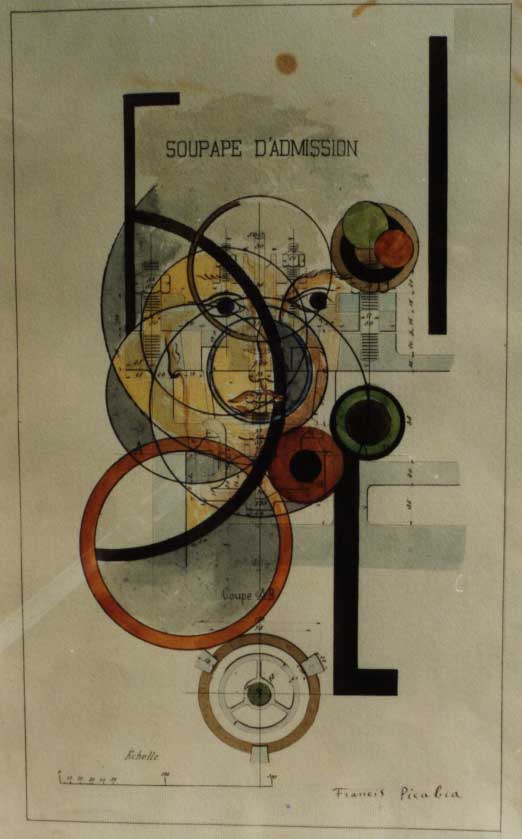(THIS ARTICLE IS MACHINE TRANSLATED by Google from Norwegian)
Fümms bö wö tää zää Uu
pögiff,
kwii Ee
Oooooooooooooooooooooooo ... ..
No, it's not a typo, and it's not a madman's last rattling sign of life. The words were uttered with great vigor by a middle-aged, tacky-looking man, and are the beginnings of German Dadaist Kurt Schwitters' "Ursonate" from 1932. Should you be curious about the rest, it's available on YouTube – with Schwitters himself and a number of other practitioners venturing out. The Ursonata in full version is a power performance – it takes over half an hour, and requires a lot of both emotional expression and open-mindedness of the audience.
I cite this as an example of how the centenary Dada is still alive, often in the shadow of art expressions with new names and labels. If you look closely, you will find clear dada roots in a wealth of expression – the roots that go back to the wild, rebellious, desperate and noisy gang that started dada in 1916 in Zurich. The backdrop was the disgust and shock of World War I – deserters and war refuges sought refuge in neutral Switzerland, and met with frustration over the misery of the world. These were artists, bohemians, revolutionaries and anarchists full of protest – one of them was in parentheses remarked Vladimir Lenin in exile, who did not yet know how revolutionary he was going to be, where he sat and played chess with the Dadaists and listened curiously to theirs noisy performances.

Yes, one of Dad's hallmarks was noise. Desperate screams accompanied by dissonant junk music should not only tear down all art expressions, but rip into bits and pieces the entire society that brought humanity into harm's way. This is how this flock of immigrants shocked Zurich for a few years. Through the establishment and the journal Cabaret Voltaire, they invited to performances the world had hardly seen before. Eventually they renamed themselves "dada". The concept itself Dada is like anything else related to the movement – disputed – but originated by a random look in a dictionary and can mean "playhorse" or "fad", or just "yes, yes". Poet Tristan Tzara later stated: "Dada means nothing." What did Dada want? Well, Dada thought they were completely without a program, yes, they were against all programs whatsoever. Their program was just not having a program, and this gave the group a unique freedom to do anything, as long as it was "against". Still, a good deal of manifestations were written by internal contradictions: "order is disorder", "self is non-self", "affirmation equals negation", "dada is not a movement, our thoughts are made in the mouth ..." Madness should be driven away with madness.
Freud and the subconscious asserted themselves in the Dadaists' method of art.
The random. Many people believe that most of what we know today as modern art, originally springs from this small group. Through their desperate negation of all art forms, they created new ones – which we today take for granted, and which have become part of the established repertoire: collages, happenings, absurd installations, abstract painting, surrealist performances, poetic antipoetry, public provocations, typographic effects and elevation of all kinds of everyday objects (ready-mades) for art.

If, in retrospect, we dare to point to some underlying principles that brought together the Dadaists, there was – in addition to the negation of "everything" – also a fascination with the role of chance. Freud and the subconscious asserted themselves in the Dadaists' method of art. Tzara made poems by cutting a piece of a random newspaper, further cutting it into single words, shaking them well together and picking them individually into poetry. Random? No, "this poem is you" – it was a result of the subconscious's choice. This is how paper collages can also be created: Create pieces in appropriate sizes, drop them over a canvas – a new image emerges! Here we see a clear line to the Dadaists closer to our days – as when Jackson Pollock let the paint flow. By the way, the paint still runs merrily to this day, in the Dadaist shows with scandalous undresses and grumpy body paint in artist Michael Alan's happenings in New York.
Collages are an important clue. It became central to splintering, cutting up, blasting in today's order and then putting it together into a patchwork of – possibly – a kind of new meaning. Not only did collages become a central art form, but all their activities became a sort of newly constructed patchwork, so the ideas of the movement spread to New York, Berlin, Cologne, Paris, Budapest, Prague, Barcelona and Hanover. When Dada was declared dead, self-destructed by internal strife and corporal battles, surrealism was born out of its ruins, with André Breton as the new leader. Not only surrealism, but also abstract art whatsoever, as well as performance art, pop art and mail art, have their ideological roots in Dada. Dada broke boundaries and dissolved conventions. Dada came to live and stand as the watchmaker of much of what has followed.
To merge after Schwitters. Back to German Kurt Schwitters – he is the closest Norway came dada in his time. He was not allowed to join the Dada guys in Berlin ("some did not like him"). He developed his special dada via the signature "Merz", which became the term he mostly created – "Gesamtkunstwerk" which included architecture, sculptures, stage poetry and especially collages where he used what he found in Askeladen's way. The cartoonists Fiske and Kverneland have brought his life to life Greatbooks – and here we get an introduction to how each of us can "merge after Schwitters" by creating collections of old fast we have in the woodshed. Try it for yourself! Schwitters became a Norwegian friend and built a primitive cottage on Hjertøya outside Molde. The interior from here is taken care of and transformed into a separate room at the Romsdals Museum, and at the Henie Onstad Museum is a permanent room dedicated to Schwitters, where the largest collection of his art outside Germany can be seen.
Here at home, Dad's 100 anniversary has gone on in silence. In Zurich, however, it has been discovered that the world is still preoccupied with the phenomenon, and the city that now calls itself "the world's Dadaist navel" has organized great feasting and 165 day celebrations. The same town was relieved that the troublemakers disappeared in their day.
A moderate political form of Dadaism saw an unexpected boom in Iceland following the financial crisis in 2008, when actor and comedian Jón Gnarr was elected Rekjavik's mayor of 2010. Tristan Tzara was one of the dyslexic Gnarr's favorites, and he himself made the most choice as a joke – a joke that became serious and four years in the chair. In good, neglected dad style, his party, The Best Party, had an important point on the program: It should break all election promises. That is why the promise of introducing squirrels, frogs and polar bears in Iceland was not fulfilled either.
Norwegian living Dadaists? Well, maybe Maja Ratkje's sound collections or Polish-Norwegian Andrej Nebb and his band Holy Toy – I remind you that their opening song on Perfect Day (1982) is just called "Dada". Otherwise, take a look at the rock band De Press' official video fish Pudding. And if that is not enough, perhaps the greatest Norwegian living Dadaist is none other than the pop artist Pushwagner with his shocking performances. But he would hardly have gotten to hang with the guys, as established as he is the establishment.





